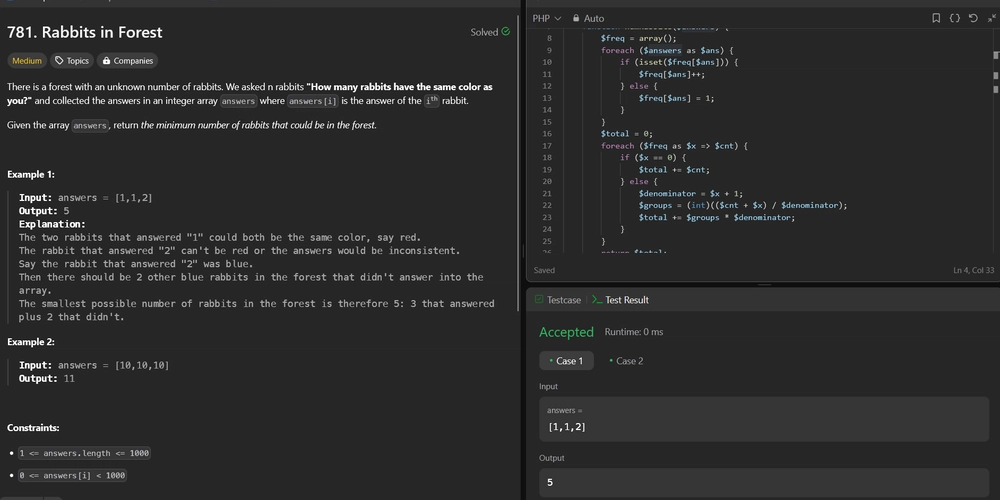Web Server Hardening Best Practices For Organizations Across Industries
Web server hardening is a critical security process that reduces an organization’s attack surface and helps defend against ransomware, malware, and other cyberthreats. In today’s threat landscape, web servers are prime targets for attackers as they often serve as the front door to an organization’s network and data. Effective server hardening minimizes vulnerabilities through systematic […] The post Web Server Hardening Best Practices For Organizations Across Industries appeared first on Cyber Security News.
.webp?#)
Web server hardening is a critical security process that reduces an organization’s attack surface and helps defend against ransomware, malware, and other cyberthreats.
In today’s threat landscape, web servers are prime targets for attackers as they often serve as the front door to an organization’s network and data.
Effective server hardening minimizes vulnerabilities through systematic configuration changes, security controls, and ongoing maintenance.
Organizations across industries, from healthcare and finance to retail and manufacturing, can benefit from implementing these practices to protect their sensitive data and maintain operational continuity.
The following article outlines essential web server hardening strategies that can be applied regardless of industry or server environment.
Understanding Web Server Vulnerabilities And Attack Surfaces
An attack surface refers to all possible entry points that cybercriminals can exploit to infiltrate your web servers and wider network infrastructure.
Web servers are particularly vulnerable because they are designed to be accessible from the internet while simultaneously housing or providing access to sensitive data and applications.
The National Institute of Standards and Technology (NIST) defines hardening as a process used to patch vulnerabilities or disable non-essential services, effectively reducing these potential attack vectors.
Common web server vulnerabilities include default configurations, unnecessary services, outdated software, weak authentication mechanisms, and information disclosure through server signatures.
Web servers left with default configurations quickly expose important information or worse, leaving forensic trails that lead directly back to your server.
The attack surface grows as organizations add more systems and services, so regular assessment and reduction of this surface is crucial for maintaining security.
In recent years, ransomware victims have paid significant remediation costs, demonstrating the substantial financial impact of inadequate server security.
Essential Web Server Hardening Techniques
Implementing proper web server hardening requires a systematic approach that addresses configuration, access control, and ongoing security management.
By following industry best practices, organizations can significantly reduce their risk of compromise.
Configuration And Access Control Measures
Proper configuration is the foundation of web server security. Start by removing unnecessary components to minimize potential vulnerabilities.
Disable the server signature to prevent information disclosure about your server type, version, and other technical details that attackers could use to target known vulnerabilities.
Remove all unnecessary web server modules, software, and services to reduce potential attack vectors.
Disable HTTP Trace and Track requests, which could be exploited for cross-site scripting attacks and session hijacking.
Configure firewall rules to limit access and block unused network ports, allowing only necessary traffic to reach your web server.
Implement network segmentation to isolate web servers from other critical systems, containing potential breaches to a single area.
- Apply the principle of least privilege so that users and service accounts have only the minimum permissions required to perform their specific functions.
- Create non-root accounts for server administration and eliminate unnecessary user accounts to reduce potential attack vectors.
- Enforce strong password policies, requiring complex passwords of at least 12 characters that include uppercase letters, lowercase letters, numbers, and symbols.
- Implement multi-factor authentication (MFA) for all administrative access to web servers, adding an extra layer of security beyond just passwords.
- Control access permissions by ensuring that important systems and configurations are only accessible to authorized personnel.
Monitoring And Maintenance Best Practices
Establishing robust monitoring and maintenance procedures ensures your web server remains secure over time.
Enable comprehensive logging of all server activities, especially authentication attempts and administrative actions.
Implement intrusion detection and prevention systems (IDPS) to identify and block suspicious activities in real-time. Schedule regular vulnerability assessments and penetration testing to identify new security gaps.
Establish automated patch management to keep your web server operating system, applications, and dependencies updated with the latest security patches.
Monitor server performance metrics to identify unusual patterns that might indicate a security incident.
Regular review of logs and security alerts is essential to detect potential breaches early. Detailed logging provides critical information for analyzing incidents and improving security posture over time.
Implementing A Comprehensive Server Hardening Process
A structured approach to web server hardening ensures no critical aspects are overlooked. Organizations should develop a systematic process that can be consistently applied across their server infrastructure.
Begin server hardening before deployment by establishing a controlled environment. Isolate new servers from network and internet traffic until they are fully hardened.
Secure the physical location of servers, verifying that settings are ideal and access is restricted to approved personnel.
Develop a server hardening checklist specific to your organization’s needs, drawing from established security frameworks like NIST guidelines and Center for Internet Security (CIS) Benchmarks.
This checklist should include securing server location and physical access controls, user account management and access permissions, firewall configuration and network security settings, removal of unnecessary software and services, configuration of secure settings for required services, implementation of encryption for data in transit and at rest, establishment of logging and monitoring systems, regular patching and update procedures, and periodic security auditing and testing.
Document all hardening procedures and configuration changes for future reference and compliance purposes.
Schedule regular reviews of your hardening process to incorporate new security best practices and address emerging threats.
By implementing these web server hardening best practices, organizations across all industries can significantly reduce their attack surface and improve their overall security posture, protecting critical assets and ensuring business continuity in today’s challenging cybersecurity landscape.
Find this News Interesting! Follow us on Google News, LinkedIn, & X to Get Instant Updates!
The post Web Server Hardening Best Practices For Organizations Across Industries appeared first on Cyber Security News.









































































































































































![[The AI Show Episode 144]: ChatGPT’s New Memory, Shopify CEO’s Leaked “AI First” Memo, Google Cloud Next Releases, o3 and o4-mini Coming Soon & Llama 4’s Rocky Launch](https://www.marketingaiinstitute.com/hubfs/ep%20144%20cover.png)




























































































































![[DEALS] The All-in-One Microsoft Office Pro 2019 for Windows: Lifetime License + Windows 11 Pro Bundle (89% off) & Other Deals Up To 98% Off](https://www.javacodegeeks.com/wp-content/uploads/2012/12/jcg-logo.jpg)



























![Is this too much for a modular monolith system? [closed]](https://i.sstatic.net/pYL1nsfg.png)





















































































































_Andreas_Prott_Alamy.jpg?width=1280&auto=webp&quality=80&disable=upscale#)































































































![What features do you get with Gemini Advanced? [April 2025]](https://i0.wp.com/9to5google.com/wp-content/uploads/sites/4/2024/02/gemini-advanced-cover.jpg?resize=1200%2C628&quality=82&strip=all&ssl=1)













![Apple Shares Official Trailer for 'Long Way Home' Starring Ewan McGregor and Charley Boorman [Video]](https://www.iclarified.com/images/news/97069/97069/97069-640.jpg)
![Apple Watch Series 10 Back On Sale for $299! [Lowest Price Ever]](https://www.iclarified.com/images/news/96657/96657/96657-640.jpg)
![EU Postpones Apple App Store Fines Amid Tariff Negotiations [Report]](https://www.iclarified.com/images/news/97068/97068/97068-640.jpg)
![Apple Slips to Fifth in China's Smartphone Market with 9% Decline [Report]](https://www.iclarified.com/images/news/97065/97065/97065-640.jpg)


































































































































.webp?#)
